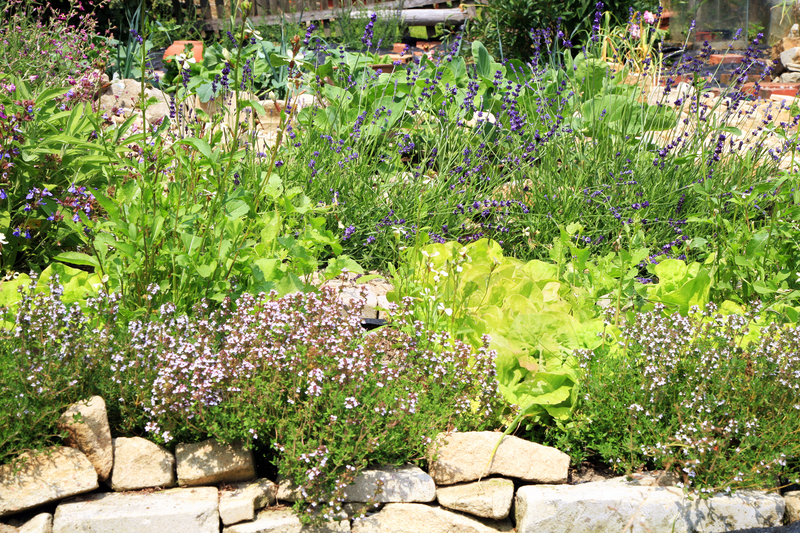Mastering the Elements: How to Handle Wind in Your Garden
Posted on 24/06/2025
Gardening is an art defined by constant change. Gardeners must work with the dance of sunlight, the flow of rain, and, sometimes most unpredictably, the force of the wind. If you've ever watched tender seedlings bend and snap or lost your carefully planned blooms to a gusty day, you know that mastering the wind is key to a thriving garden. This comprehensive guide explores how to handle wind in your garden, drawing on proven techniques, planting advice, and creative solutions to turn even the windiest patch of earth into a flourishing oasis.
Understanding Wind in the Garden: Friend or Foe?
While we often see wind as an adversary to our garden plans, it's important to recognize its dual role. Mild breezes can strengthen plant stems, spread pollen, and even deter pests. Yet, unchecked winds can wreak havoc:
- Physical Damage: Wind uproots seedlings, breaks branches, and shreds leaves
- Moisture Loss: Constant airflow increases evaporation, drying soil and stressing plants
- Temperature Effects: Winds can chill sensitive plants, increasing the risk of frost damage or desiccation
Mastering the elements requires turning wind's force to your garden's advantage while protecting vulnerable plants from its harshest effects.

Assessing the Wind in Your Garden
Why Garden Wind Assessment Matters
Before implementing wind management strategies, it's vital to understand your specific conditions. Different gardens experience different wind patterns based on local geography, structures, and plantings.
Steps to Assess Wind in Your Landscape:
- Observe prevailing winds: Note the direction and intensity across seasons. Use flags, wind socks, or observation to find common wind paths.
- Spot wind tunnels: Fences, walls, and buildings can funnel and concentrate wind. Observe how air moves around your property during storms.
- Understand microclimates: Trees, shrubs, and terrain affect wind. Some areas may be sheltered, while others are exposed.
- Monitor plant impacts: Browning edges, leaning stems, and rapid soil drying signal wind stress.
Choosing the Best Wind-Resistant Plants
Characteristics of Wind-Tolerant Plants
Selecting resilient species is crucial for mastering wind in your garden. Look for plants with the following traits:
- Flexible stems and branches that bend instead of breaking
- Small or narrow leaves that reduce wind resistance
- Deep, sturdy root systems anchoring them firmly in the ground
- Native species accustomed to local wind patterns
Best Choices for Windy Gardens
- Ornamental Grasses: Fountain grass, feather reed grass, and blue fescue sway gracefully and rebound after high winds.
- Shrubs: Escallonia, juniper, and pittosporum develop dense branches that buffer wind.
- Trees: Oaks, hawthorns, and alder have strong wood and deep roots suited for exposed sites.
- Tough Perennials: Yarrow, coreopsis, lavender, and Echinacea are reliable and low-maintenance.
Avoid top-heavy or brittle plants that may snap or suffer windburn.
Creating Effective Windbreaks and Shelterbelts
What is a Windbreak?
Windbreaks are barriers--living or structural--designed to reduce wind speed and shield susceptible areas. Mastering the use of windbreaks is essential for any windy garden.
Plant-Based Windbreaks
- Layered plantings: Combine tall trees, medium shrubs, and groundcovers in staggered rows for effective wind diffusion.
- Dense hedges: Use evergreen species like privet, yew, or laurel for year-round protection.
- Strategic spacing: Allow some wind to filter through; solid walls create turbulence on the sheltered side.
- Placement: Site the windbreak perpendicular to prevailing winds for maximum coverage.
Structural Windbreaks
- Fences: Lattice or slatted designs break and slow wind without causing damaging eddies.
- Garden structures: Pergolas and trellises covered with climbing plants act as living shelters.
- Temporary screens: Burlap, reed matting, or shade cloth offer quick fixes for young or delicate beds.
Garden Design and Layout for Wind Management
Strategic Planning
When designing for wind resistance in your garden, consider the following strategies:
- Zone placement: Place patios, delicate flower beds, and vegetable patches in sheltered locations.
- Stagger heights: Graduated plantings from tall windbreaks to lower groundcovers create a natural buffer.
- Leverage structures: Position sheds, greenhouses, or garages to block wind and protect sensitive plants.
- Pathways and gaps: Curved paths and staggered entry points disrupt wind flow and reduce its impact.
Using Hardscaping to Tame the Wind
- Walls: Brick or stone walls can shelter key garden zones but should include gaps or be set at an angle to the wind for best results.
- Raised beds: These help protect roots from cold winds and improve drainage in exposed areas.
- Boulders and rock gardens: Large stones break up airflow and can serve as wind shadows for smaller plantings.
Caring for Plants in Windy Conditions
Wind Protection for Young and Delicate Plants
- Staking: Use soft ties to loosely anchor young trees and floppy flowers, allowing movement to encourage strong growth.
- Cloches and tunnels: Protect seedlings and young vegetables with row covers, cloches, or cold frames.
- Mulching: Apply a thick organic mulch to conserve soil moisture and reduce temperature fluctuations.
- Temporary screens: Shield new plantings until they establish strong root systems.
Soil Care Under Windy Conditions
- Organic matter: Incorporate compost and organic material to improve water retention and soil structure.
- Regular watering: Adjust schedules as wind increases evaporation; water at the base of plants to minimize leaf loss.
- Wind erosion prevention: Establish cover crops or groundcovers to anchor soil in autumn and winter.
Innovative Solutions for Handling Wind in Your Garden
The Benefits of Living Fences
A living windbreak is not only practical, but also brings beauty and biodiversity to your landscape. Mature hedges support birds and pollinators while buffering wind. Consider native shrubs for extra resilience and wildlife value.
Windswept Style: Embracing the Elements
Sometimes, the best solution to relentless wind is to work with, not against, the prevailing conditions. Create a "windswept" garden style using tough, salt- or wind-tolerant plants, natural pebble mulch, and flowing grass borders. The result is a unique, romantic landscape instead of a constant battle.
Wind-Powered Features
- Garden art: Kinetic sculptures, wind chimes, and mobiles harness wind energy for interest and sound.
- Energy: Small wind turbines (where permitted) can help offset garden lighting or pond pumps for the eco-minded gardener.
Expert Tips for Mastering the Elements in Your Garden
- Monitor and adapt: Keep records of damage after storms and continually adjust your plant choices and shelter strategies.
- Prune wisely: Remove weak, diseased, or overcrowded branches regularly to reduce wind resistance and prevent breakage.
- Flexible support: Use materials like tree ties that allow some movement, strengthening plants rather than creating rigid constraints.
- Start small: If establishing new windbreaks, use fast-growing "nurse" plants to protect slower species as they mature.
- Consider all seasons: Winds may change direction or intensity with shifting seasons--plan for year-round protection.

Frequently Asked Questions on Wind Management in Gardening
What is the best way to shield a vegetable garden from the wind?
Plant a living hedge on the windward side of your vegetable patch, and use wind-permeable fencing as additional support. Raised beds and dense ground cover will further help protect fragile crops.
How high should a windbreak be?
As a rule of thumb, a windbreak protects an area up to 10 times its own height on the leeward side. Even a 6-foot hedge can create significant shelter for small plots.
Can wind actually help strengthen my plants?
Yes! Regular, moderate wind movement triggers micro-growth in plant stems, making them sturdier--a phenomenon called thigmomorphogenesis. Just ensure extreme wind events are buffered for fragile or new specimens.
Conclusion: Turning Wind into an Ally
Mastering the elements in your garden comes down to understanding your environment, planning thoughtfully, and picking the right plants and structures for year-round success. With careful observation and smart strategies--from windbreak planting and clever garden design to tactical plant selection--you can transform even the most windswept plot into a lush, sheltered haven.
Don't fight the gusts--learn to channel, soften, and embrace the wind as a dynamic force in your garden adventure.
Ready to take control of your outdoor space? Begin today with these tips, and soon you'll be enjoying a wind-wise, resilient, and beautiful garden--no matter what the weather brings.


